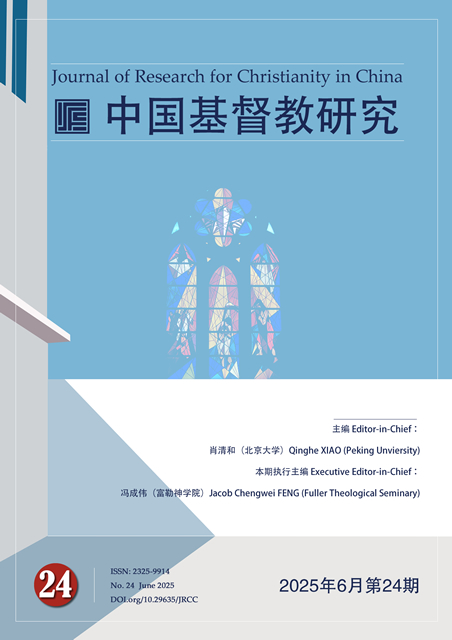Abstract
The Ethiopian Orthodox Tewahedo Church, one of Africa’s oldest Christian traditions, traces its origins to the Christianization of the Aksumite Kingdom in the 4th century CE. Through the conversion of King Ezana and the missionary efforts of Frumentius, Christianity became a state ideology, closely tied to the Alexandrian Coptic Church and grounded in Miaphysite theology. During the medieval period, the Church navigated challenges such as Islamic expansion by consolidating monastic networks and aligning with the Solomonic dynasty, which legitimized its rule through the Kebra Nagast narrative. In the modern era, the Church faced Portuguese Jesuit missions, Oromo migrations, colonial resistance, and socialist reforms, ultimately achieving autocephaly in 1959. In the globalized world, it balances the preservation of Ge’ez traditions with competition from Evangelical movements, while its cultural legacy—exemplified by Lalibela’s rock-hewn churches, manuscript art, and Timkat festivals-continues to define Ethiopian national identity. The Church’s resilience and localized adaptation position it as a paradigm of African Christianity.
References
Adamo, D. T. (2001). Explorations in African biblical studies. Wipf and Stock Publishers.
Abbink, J. (2002). Paradoxes of power and culture in an old periphery. In W. James et al. (Eds.), [Title of the edited volume]. [Publisher].
Amare, G. (1967). Aims and purposes of church education in Ethiopia. The Ethiopian Journal of Education, 1(1), 1–11.
Ancel, S. (2011). Centralization and political changes: The Ethiopian Orthodox Church and the ecclesiastical and political challenges in contemporary times. Rassegna di Studi Etiopici, 3, 1–26.
Ancel, S. (2011). Territories, ecclesiastical jurisdictions and centralization process: The improvement of the Ethiopian Patriarchate Authority (1972–1983). Annales d’Éthiopie, 26(1), 167–178.
Appleyard, D. (2007). Ethiopian Christianity. In The Blackwell companion to Eastern Christianity (pp. 117–136). Blackwell Publishing.
Araya, A., & Gebeyehu, T. (2024). Tales and misconceptions on the origin of the dogmatic controversy of the Ethiopian Orthodox Tewahdo Church. Ethiopian Journal of Social Sciences, 10(1).
Babu, B. G. (2022). Cultural contacts between Ethiopia and Syria: The Nine Saints of the Ethiopian tradition and their possible Syrian background. Ethiopian Orthodox Christianity in a Global Context, 42.
Bartnicki, A., & Mantel-Niećko, J. (1969). The role and significance of the religious conflicts and people’s movements in the political life of Ethiopia in the seventeenth and eighteenth centuries. Rassegna di Studi Etiopici, 24, 5–39.
Bausi, A. (2020). Ethiopia and the Christian ecumene: Cultural transmission, translation, and reception. In A companion to medieval Ethiopia and Eritrea (pp. 217–251). Brill.
Baye, T. G. (2016). Gojjam (Ethiopia): Peopling, Christianization, and identity. African Identities, 14(3), 255–272.
Berhe, M. G., & Gebresilassie, F. H. (2021). Nationalism and self-determination in contemporary Ethiopia. Nations and Nationalism, 27(1), 96–111.
Binns, J. (1997). Finding faith in Ethiopia. Theology, 100(794), 83–90.
Boylston, T. (2012). The shade of the divine: Approaching the sacred in an Ethiopian Orthodox Christian community (Doctoral dissertation, London School of Economics and Political Science).
Crummey, D. (1988). Imperial legitimacy and the creation of neo-Solomonic ideology in 19th-century Ethiopia. Cahiers d’Études Africaines, 28(13–14), 13–43.
Crummey, D. (2004). Ethiopia in the early modern period: Solomonic monarchy and Christianity. Journal of Early Modern History, 8(3), 191–209.
Ebeid, B. (2021). Metaphysics of Trinity in Graeco-Syriac Miaphysitism: A study and analysis of the Trinitarian Florilegium in MS BL Add. 14532. Studia Graeco-Arabica, 11(1), 83–128.
Finneran, N. (2013). Lucy to Lalibela: Heritage and identity in Ethiopia in the twenty-first century. International Journal of Heritage Studies, 19(1), 41–61.
Haile Sellassie I University, Institute of Ethiopian Studies. (1967). Journal of Ethiopian Studies, 5.
Henze, P. B. (1981). Communism and Ethiopia. Problems of Communism, 30, 55.
Kaplan, S. (2003). The social and religious functions of the Eucharist in medieval Ethiopia. Annales d’Éthiopie, 19(1), 7–18.
Karlsson, J., Gnisci, J., & Dege-Müller, S. (2023). A handlist of illustrated early Solomonic manuscripts in British public collections. Aethiopica, 26, 159–225.
Larebo, H. M. (1988). The Ethiopian Orthodox Church and politics in the twentieth century: Part II. Northeast African Studies, 10(1), 1–23.
Loimeier, R. (2013). Muslim societies in Africa: A historical anthropology. Indiana University Press.
Marcus, C. (2008). Sacred time, civic calendar: Religious plurality and the centrality of religion in Ethiopian society. International Journal of Ethiopian Studies, 3(2), 143–175.
Marcus, H. G. (2023). A history of Ethiopia. University of California Press.
Moore, D. H. (1936). Christianity in Ethiopia. Church History, 5(3), 271–284.
Muehlbauer, M. (2023). An African “Constantine” in the twelfth century: The architecture of the early Zagwe dynasty and Egyptian episcopal authority. Gesta, 62(2), 127–152.
Nosnitsin, D. (2012). Ethiopian manuscripts and Ethiopian manuscript studies: A brief overview and evaluation. Gazette du Livre Médiéval, 58(1), 1–16.
Owens, T. J. (2008). Beleaguered Muslim fortresses and Ethiopian imperial expansion from the 13th to the 16th century (Doctoral dissertation, Naval Postgraduate School).
Pankhurst, R. (1975). Ethiopia’s economic and cultural ties with the Sudan from the Middle Ages to the mid-nineteenth century. Sudan Notes and Records, 56, 53–94.
Phillipson, D. W. (2009). The first millennium BC in the highlands of Northern Ethiopia and South-Central Eritrea: A reassessment of cultural and political development. African Archaeological Review, 26(4), 257–274.
Polotsky, H. J. (2017). Aramaic, Syriac, and Ge’ez. In Languages and cultures of Eastern Christianity: Ethiopian (pp. 187–196). Routledge.
Rukuni, R. (2020). Early Ethiopian Christianity: Retrospective enquiry from the perspective of Indian Thomine tradition. HTS Teologiese Studies/Theological Studies, 76(3).
Salvadore, M. (2010). The Jesuit mission to Ethiopia (1555–1634) and the death of Prester John. In World-building and the early modern imagination (pp. 141–171). Palgrave Macmillan.
Sobania, N. W. (2022). Adopted and adapted: Ethiopian Orthodox Christianity. Peregrinations: Journal of Medieval Art and Architecture, 8(1), 52–66.
Sorenson, J. (1992). Essence and contingency in the construction of nationhood: Transformations of identity in Ethiopia and its diasporas. Diaspora: A Journal of Transnational Studies, 2(2), 201–228.
Tadesse, G. W. (2024). The influence of the Ethiopian Orthodox Church in social, economic, and political aspects: A historical perspective. Cogent Arts & Humanities, 11(1), 2364489.
Wemlinger, C. R. (2008). Identity in Ethiopia: The Oromo from the 16th to the 19th century (Doctoral dissertation, Washington State University).
Witakowski, W. (2012). Ethiopian monasticism. Patristica Nordica Annuaria, 27.

This work is licensed under a Creative Commons Attribution-NonCommercial-NoDerivatives 4.0 International License.

